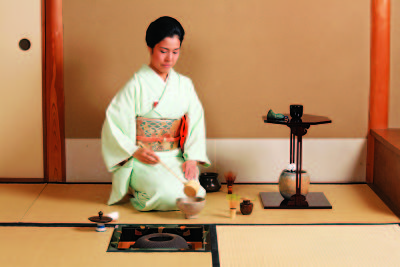Kenrokuen Gardens Kanazawa
The Kenrokuen Gardens are famous for their year-long beauty, lush and serene landscapes. Situated in Kanazawa, Ishikawa, Japan, it is an old park-like garden and is the city’s main attraction. The entry is paid and is open for leisure year-round, except December 29 to January 3.

It was built by the Maeda clan, the then ruler of the Kaga Domain (Kanazawa Domain), from the 1620s to the 1840s. Speaking of this, a fire back in 1759 completely wiped out the beautiful gardens. However, the ruler restored the site to its glory in 1774 and acquired its present name Kenrokuen Gardens by 1822.
The name translates to “Six Attributes Garden” or “Garden of Six Elements,” derived from a Chinese book, named, “Chronicles of the Famous Luoyang Gardens”. This means that a combination of six elements makes up a perfect garden, namely
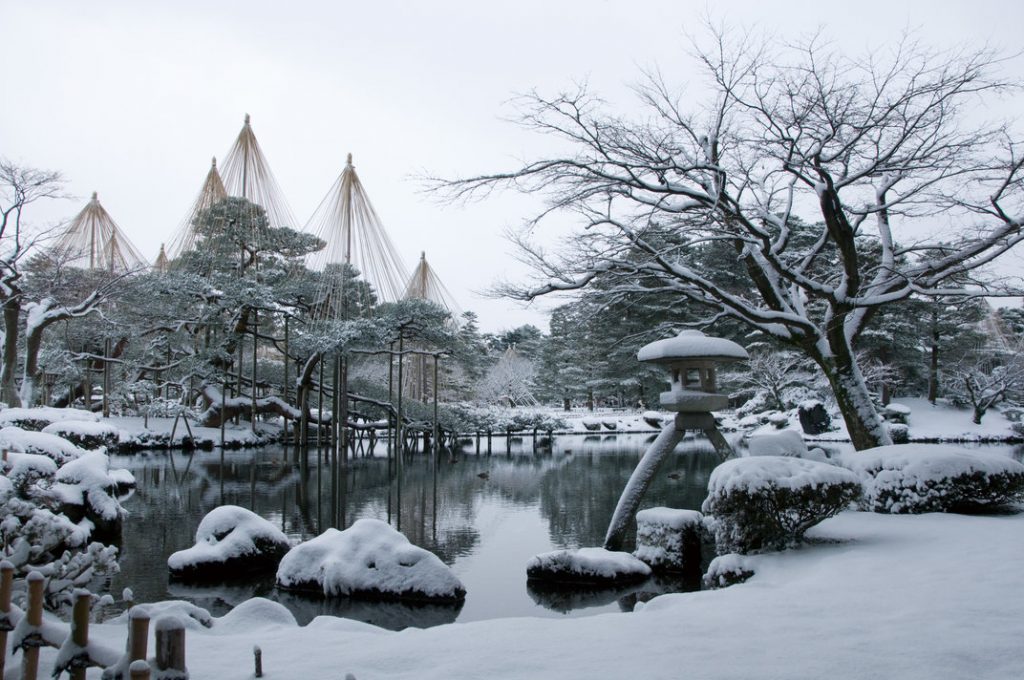
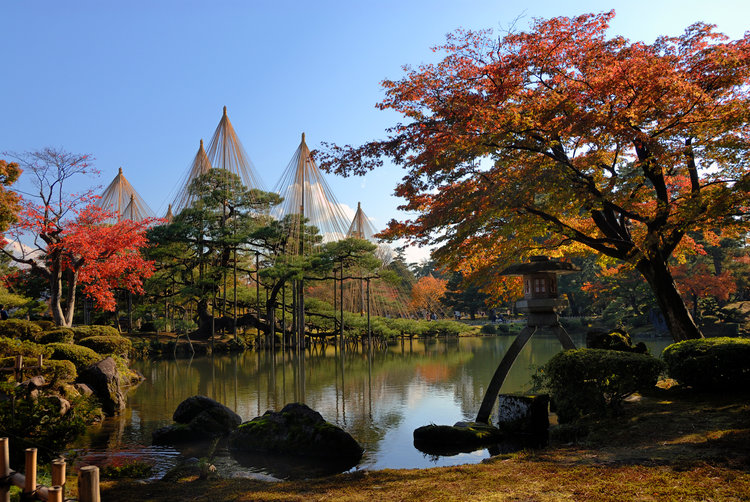
- Expansive Space
- Quiet Seclusion
- Human Artifice
- Antiquity
- Flowing Water
- Panoramas Or Distant Views
The garden boasts of all the six elements reflected in its construction.
Features:
The garden has 8,750 trees coupled with 183 species of plants. Other specialties include:
- The oldest fountain operated with natural water pressure. It has a height of 3.5 meters
- Karasaki Pine, planted by the 13th Lord Nariyasu from Karasaki
- Flying Geese Bridge, made of eleven red stones resembling a flying geese
- Kaiseki Pagoda
Let us walk you through the places that you must not miss if your next traveling destination happens to be the sumptuous Kenrokuen Gardens.
Top 5 Beauty Spots in Kenrokuen
1: The Yugao-Tie Teahouse:
Also known as Moonflower Teahouse, it is a grass-hut style construction built in 1774. The main room is rather small but spacious enough to host a full-fledged teahouse ceremony. Yugao translates to “Moonflower,” a design engraved on the main wall of the teahouse. It has fascinating architecture and a majestic appeal.
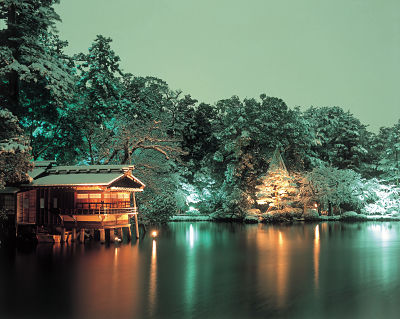
2: Midori-Taki
It stands opposite to the Yugao-Tie Teahouse and is 6.6m and 1.6m in height and width, respectively. The cascading waterfall is a sheer delight to the ears and makes for a picturesque view. Hence, it is one of the most beautiful sites in Kenrokuen Gardens.
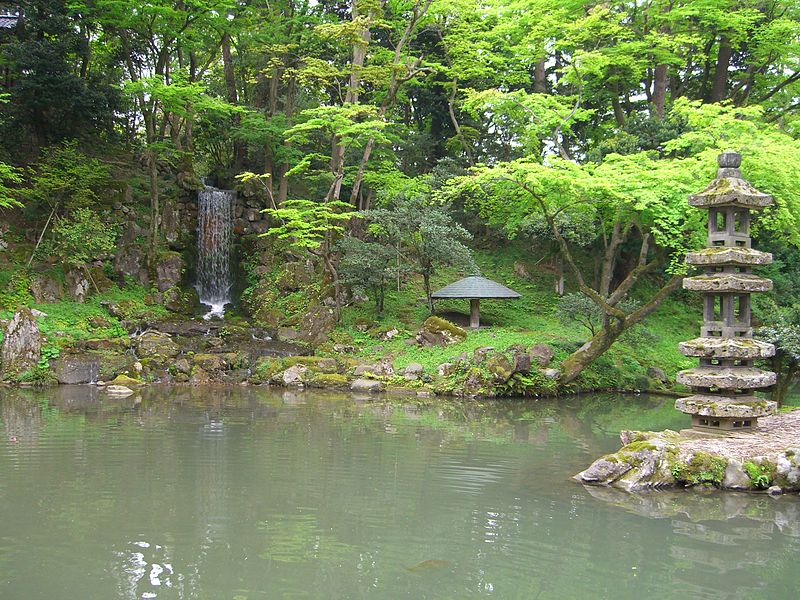
3:Kasumiga-Ige
Located right at the center of the Kenrokuen gardens and flowing amidst the backdrop of remarkable hills, Kasumiga-Ige or the Misty Pond is a visual delight. The pond measures 5,800 square meters with a depth of 1.5 meters.
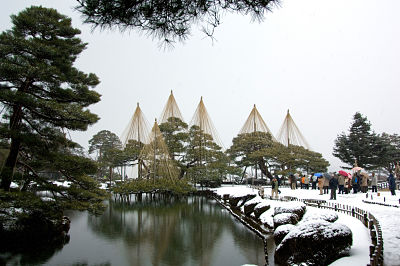
4: Kotoji Toro:
The Kotoji Toro lantern stands tall at the northern side of the Kasumiga-Ige (Misty Pond). This stone lantern, with two legs, shares a striking resemblance to a bridge in koto. Koto, a stringed musical instrument, is the national instrument of Japan
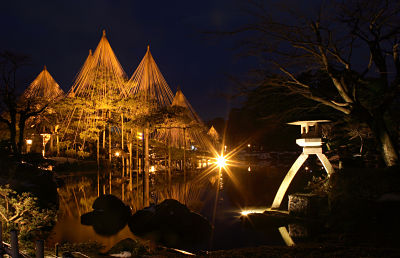
5: Shigue Tei:
It is famous for Matcha, green tea in powdered form, and Sencha (green tea). It was originally built by Maeda Tsunanori, the 5th Lord of the Kaga domain, but was demolished as and when the reign ended. Rebuilt in 2000, this is now one of the major attractions of Kenrokuen gardens.
